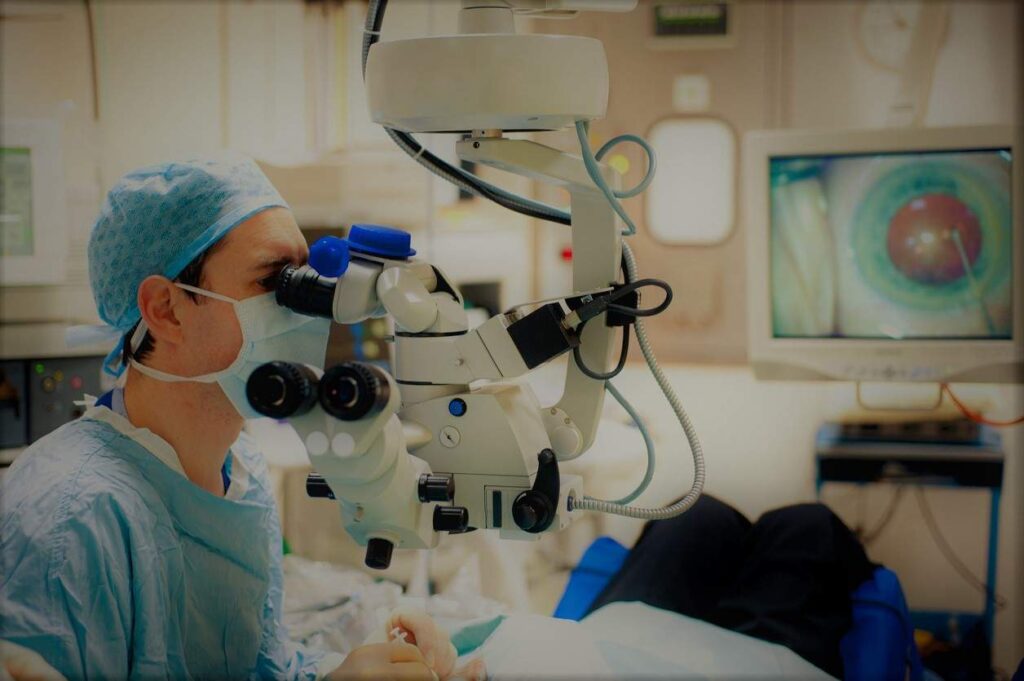The amount of time required for some changes to occur after LASIK is dictated on your age at the time of the treatment and if you have any other progressive eye disorders.
Following LASIK, one’s eyesight may alter.
While LASIK permanently modifies your vision, there are a multitude of reasons why your vision may change after LASIK.
Your vision may change over time if the underlying condition that impairs it — such as myopia (nearsightedness), hyperopia (farsightedness), or astigmatism (blurry vision) — worsens. According to the American Refractive Surgery Council, this is the case. It is conceivable that this voyage may affect your vision.
Another common explanation for vision changes years after lasik eye condition called presbyopia, which happens as the eyes age. This happens as you age and your lens gets less flexible, impairing your ability to focus on objects in your close area.
The duration of LASIK is decided by your age at the time of surgery and the degree to which your eye disorders develop, if at all.
Even after 10 years of therapy, the great majority of people who have LASIK remain happy with their eyesight.
According to one study, 35% of those who had LASIK had it to be repeated after 10 years due to wear and tear. Another study by Trusted Source followed individuals who received LASIK for nearsightedness and/or astigmatism. The researchers observed that around 10% of study participants had age-related visual changes during the course of the 12-year trial.
If your vision gets blurry again for whatever reason after your original surgery, you may be eligible for LASER enhancement years later. It is determined by the amount of tissue removed during the first therapy and the amount of tissue left after that surgery.

What is LASIK?
When light strikes the cornea, your eye’s transparent outer layer, it bends and gets focused on the retina, which is situated in the back of your eye. This is known as refraction.
Due to the fact that light does not bend properly, it does not concentrate on your retina, resulting in blurred vision. This is referred as a refractive error.
LASER may be used to repair three of the most frequent types of refractive errors:
• Nearsightedness is an eyesight condition (myopia).
When you look at items near to you, your vision is sharp; yet, when you look at objects far away, your vision becomes blurry.
• The capacity for foresight (hyperopia).
When you stare at far objects, your vision is clear, but when you look at near items, your vision becomes foggy.
Blurred vision is caused by an irregular shape of the cornea, the front surface of the eye.
LASIK corrects these problems by reshaping your cornea with lasers or small blades. It takes time, but once complete, light is properly bent and focused on your retina.
As a result, you’ll have sharp, clear vision both close up and far away. The ultimate goal is to improve your vision to the point that glasses or contacts are no longer necessary.
What to Expect Promptly Following LASIK
You may have one or more of the following symptoms after surgery, which should resolve within a few weeks to months:
- Foggy or cloudy vision
- Dry, itchy eyes
- Enhanced light sensitivity; visual anomalies such as double vision, glare, and haloes; and other symptoms
When undergoing LASIK, it is crucial to avoid rubbing or poking your eye, since this may cause the flap to slip out of place and obstruct the healing process.
Following LASIK, you may discover that you no longer need glasses or contact lenses. While they are not essential for many occupations, such as reading or driving, they may be necessary for some if your vision is not totally recovered.
LASIK is a treatment that alters the curvature of your cornea permanently and irreversibly. While this is true, it does not guarantee that your vision will stay clear for the remainder of your years. LASIK cannot repair the changes in the eyes that occur naturally as a result of aging.
Around the age of 40, almost everyone wears reading glasses due to presbyopia’s impairment of near vision (age-related macular degeneration). LASIK will not be able to resolve this condition.

Selecting a laser surgeon: some recommendations
When choosing a doctor to perform your LASIK, it may be good to bear the following points in mind:
Consult your primary care physician, as well as relatives and friends who have had LASER, to help you choose a doctor.
1. Select a LASIK surgeon with extensive experience and a high success rate.
2. Select a physician whose office is conveniently located for you.
3. Select a doctor who does LASIK in the way in which you prefer (all laser, bladed, or custom).
4. Compare pricing and find a doctor who is both affordable and flexible with payment options.
5. Verify the legitimacy of any facilities that advertise significantly discounted or “affordable” LASIK before electing to get treatment there.
6. Confirm that the price includes everything and that there are no hidden expenses, such as those linked with follow-up consultations.
7. Most importantly, select a physician with whom you feel at ease and in whom you have trust.
Final thoughts
Laser-assisted in situ keratomileusis (LASIK) is an eye surgery procedure that may greatly improve your vision. It permanently modifies the shape of the tissue in front of your eye, which persists for the remainder of your life. However, as a natural component of aging, the majority of people’s vision deteriorates with time. Because LASIK cannot prevent this, your vision may get blurry again as you age.